Plenary 1
SLEEP, WAKEFULNESS & ANESTHESIA
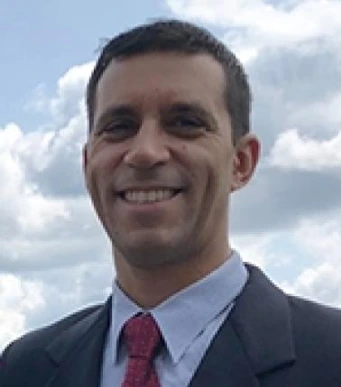
Giancarlo Vanini is an Assistant Professor in the Department of Anesthesiology and a member of the Center for Consciousness Science and Neuroscience Graduate Program at the University of Michigan. He has dual training in medicine and neuroscience. Research in the Vanini Laboratory focuses on understanding the brain circuitry underlying the regulation of arousal states of sleep and wakefulness, and how these neural systems contribute to (1) the fluctuation of consciousness levels across spontaneous sleep-wake states, (2) the recovery of consciousness from general anesthesia, (3) the sleep-pain interface, and (4) the relationship between postoperative sleep disturbances and cognitive function. To this end, the lab combines behavioral assays, analysis of EEG rhythms and dynamics, neurochemical monitoring, recordings of calcium-dependent neuronal activity, viral tracing for identification of projection pathways, as well as chemogenetic/optogenetic tools to identify and probe neural networks controlling sleep, wakefulness and pain.
Preoptic Hypothalamic Mechanisms Controlling Sleep-Wake States Do Not Influence the Loss and Recovery of Consciousness Associated with Isoflurane Anesthesia
Despite 175 years of continuous clinical use of general anesthetics, the precise mechanisms by which these drugs reversibly suppress consciousness remain unknown. One long-standing hypothesis in the field, which is largely supported by ample correlative evidence, is that anesthetics co-opt the brain circuits that regulate sleep. First, I will review evidence from several independent studies, including ours (Vanini et al., Curr Biol 2020; PMID:32084397), demonstrating that the preoptic area of the hypothalamus is a key component of the brain circuitry that controls sleep onset and sleep homeostasis. Additionally, I will present our recent work challenging the long-standing notion in sleep neurobiology that the preoptic area is exclusively somnogenic (Mondino et al., J Neurosci 2021; PMID: 33664133). In this study, we demonstrated that stimulation of a subset of glutamatergic neurons within the ventral-lateral portion of the preoptic area promote wakefulness, fragment sleep, suppress rapid eye movement sleep, and produce a shift in cortical rhythms and dynamics during sleep akin to a wake-like state (i.e., a “lighter” sleep). Last, I will discuss our study testing the hypothesis that selective activation of discrete neuronal subpopulations within the median preoptic nucleus (MnPO) and ventrolateral preoptic nucleus (VLPO) of the hypothalamus would modulate sleep/wake states and alter anesthetic induction and recovery time (Vanini et al., Curr Biol 2020; PMID:32084397). We showed that activating sleep-promoting (GABAergic, MnPO) and wake-promoting (glutamatergic, VLPO) neurons in the preoptic hypothalamus altered sleep-wake architecture but did not influence anesthetic state transitions. Collectively, our results suggest that the correlative evidence for a mechanistic overlap between sleep and anesthesia might not necessarily have strong causal significance.
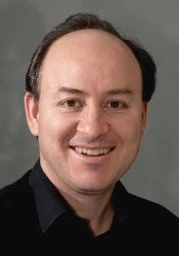
Professor Matthew Larkum, Neuroscientist & Director of the Larkum Lab, Berlin. He is Professor of “Neuronal Plasticity”, Department of Biology, Humboldt University of Berlin. Matthew Larkum graduated with a degree in physiology from the University of Sydney and completed his Ph. D. at the University of Bern, Switzerland.
I graduated from Sydney University with a thirst for solving the brain and was lucky to be a post-doc in the laboratory of Nobel prize-winner Bert Sakmann for 6 years. It was here that I cut my teeth on hardcore electrophysiological and imaging techniques for understanding the computational properties of cortical neurons. I continued this focus upon starting up my own laboratory in Switzerland and more recently in Berlin where the laboratory has grown to accommodate a more comprehensive investigation of the contribution of single-cell computation to the process of cognition, learning and memory. The aims of the lab are based on a unifying hypothesis that the incredible cognitive power of the cortex derives from an associative mechanism built in at the cellular level such that the architecture of the cortex is tightly coupled with the computational capabilities of single cells. In essence, this hypothesis places new importance on the computational power of neurons that has ramifications for our understanding of cognition and for neurodegenerative diseases that disturb neuronal properties.
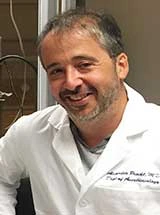
I completed my Ph.D. work in the lab of Klaude Weiss at Mount Sinaci where I studied how simple neuronal networks of invertebrates are dynamically reconfigured to produce distinct behaviors. Upon completion of Anesthesiology residency at Weill Cornell, I was a post-doc at the Rockefeller University in Donald Pfaff’s lab where I studied brain arousal circuits and in Marcelo Magnasco’s lab where I studied computational neuroscience. My lab at the University of Pennsylvania studies how neuronal dynamics give rise to adaptive behaviors and how these dynamics are altered by anesthetics. To this end we use a combination of experimental methods for recording and manipulating brain activity and mathematical modeling.
A. Proekt, U Pennsylvania, Anesthesiology & Critical Care
The scientific inquiry into mechanisms through which anesthetics act to induce a reversible state of unconsciousness are inextricably linked to the study of consciousness per se. Anesthetic mechanisms can be addressed at a number of levels from detailed understanding of molecular interactions between receptors and anesthetic compounds to their effects on individual neurons and neuronal circuits. In this talk, I will address mechanisms of anesthesia at a more macroscopic level, that of global brain dynamics. Consciousness emerges as a consequence of complex bidirectional interactions between the brain and the environment. At this level, the effect of anesthetics can be broadly conceptualized as decoupling the brain from the environment. In this talk, I will first offer a hypothesis that in order to enable the complex and flexible coupling between the brain and the environment, brain dynamics must be critical and provide some experimental support for this hypothesis using spontaneous brain activity in humans and nonhuman primates. I will then discuss our recent results on effects of mechanistically distinct anesthetics on macroscopic brain dynamics evoked by simple visual stimuli in the mouse cortex.
Keynote 1 - Plenary 2
BRAIN & CONSCIOUSNESS
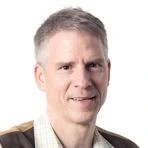
Christof received his baccalaureate from the Lycée Descartes in Rabat, Morocco, his B.S. and M.S. in physics from the University of Tübingen in Germany and his Ph.D. from the Max-Planck Institute for biological Cybernetics in 1982. Subsequently, he spent four years as a postdoctoral fellow in the Artificial Intelligence Laboratory and the Brain and Cognitive Sciences Department at the Massachusetts Institute of Technology. From 1987 until 2013, Koch was a professor at the California Institute of Technology (Caltech) in Pasadena, from his initial appointment as Assistant Professor, Division of Biology and Division of Engineering and Applied Sciences in 1986, to his final position as Lois and Victor Troendle Professor of Cognitive & Behavioral Biology. See here for Christof's academic pedigree and his students. Christof joined the Allen Institute for Brain Science as Chief Scientific Officer in 2011 and became President in 2015. Christof’s passion are neurons – the atoms of perception, memory, behavior and consciousness – their diverse shapes, electrical behaviors, and their computational function within the mammalian brain, in particular in neocortex. The Allen Institute for Brain Science is engaged in a major effort to identify all the different types of neurons in the brains of mice and humans – the cell census effort. See the papers below. Christof discovered that in vivo cortical neurons do not integrate over large number of small inputs given their spiking variability, how neurons can multiply, the relationship between intra- and extra-cellular potential, and how this gives rise to the local field potential and the large-scale current sinks and sources and how weak extracellular fields can entrain spiking activity via ephaptic effects. He postulated the attentional saliency map hypothesis for biological and computer vision according to which one or more topographic organized spatial maps summarize bottom-up salient information in the visual system, he co-discovered, with Itzhak Fried, an high-level, invariant and abstract single neuron representation of familiar individuals and objects in the human medial temporal lobe (the so-called “Jennifer Aniston” or concept neurons) and developed the ‘continuous flashed suppression’ masking technique. In collaboration with Francis Crick, he initiated the modern search for the neuronal correlates of consciousness, a systematic experimental program to identify the minimal bio-physical mechanisms jointly sufficient for any one specific conscious percept. In collaboration with Giulio Tononi, he co-developed the Integrated Information Theory of consciousness.
I will discuss what we can reasonably state about consciousness and its neuronal footprints in the mammalian brain, in particular the cortex, how to detect its presence and how psychedelics might affect these footprints
Plenary 3
BRAIN CONNECTIVITY

I am a CNRS researcher at Ecole Normale Supérieure, currently in detachment at Facebook AI Research. My group focuses on understanding the computational bases of human cognition. For this, we develop paradigms, methods and models to analyze brain activity.
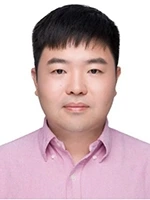
Dr. Zirui Huang is a Research Assistant Professor in the Department of Anesthesiology and a member of the Center for Consciousness Science at the University of Michigan Medical School. He has a multidisciplinary background including psychology, biology, cognitive neuroscience and neuroimaging. His primary research intereAnirban Bandyopadhyay is Principal Research Scientist at the National Institute for Materials Science (NIMS), Tsukuba, Japan.st lies in investigating the neural substrates of consciousness. He studies the mechanistic role of large-scale brain networks in conscious cognition and its alteration by means of pharmacologic, neuropathologic and psychiatric manipulations of consciousness using functional MRI. He earned his Ph.D. in Cognitive Neuroscience from the Institute of Psychology, Chinese Academy of Sciences. After his Ph.D., he continued his research for two postdoc periods at the University of Ottawa and the University of Michigan. To-date, he has published 45+ scientific articles. Among those, 20+ first/co-first author articles that have been published in Science Advances, Cell Reports, Neuroscience & Biobehavioral Reviews, The Journal of Neuroscience, Cerebral Cortex, NeuroImage, etc. He also serves as Ad Hoc Reviewer for prestigious scientific journals, such as Trends in Cognitive Sciences, Advanced Science, Molecular Psychiatry, The Neuroscientist, etc. Media interviews: The Scientist: https://www.the-scientist.com/news-opinion/alternate-activation-of-two-… Scientific American: https://www.scientificamerican.com/article/constant-shifts-between-ment…
Macroscale brain dynamics, gradients, and the gate to consciousness
Zirui Huang, University of Michigan Medical School, Department of Anesthesiology
Evidence from noninvasive functional neuroimaging studies has pointed to two distinct cortical systems that may mediate the ongoing stream of human consciousness, an internally directed system – default mode network and an externally directed system – dorsal attention network. During Dr. Huang’s talk, he will discuss how the two systems unfold over time in the conscious brain, and how they are disrupted when consciousness is diminished. He will elaborate the concept of “temporal circuit," which is characterized by a set of trajectories along which the dynamic brain activity occurs (Huang et al., 2020, Science Advances). Next, Dr. Huang will present an extended work, in which the level and content of consciousness were manipulated using independent task-fMRI protocols. He will show that the anterior insula, situated between unimodal and transmodal cortical areas along the brain’s primary functional gradient, regulates the default mode – dorsal attention network transitions, and gates conscious access of sensory information (Huang et al., 2021, Cell Reports). Finally, Dr. Huang will talk about the brain’s multidimensional functional landscape, and introduce a common macroscale neurofunctional framework that can account for both normal and altered states of consciousness.Evidence from noninvasive functional neuroimaging studies has pointed to two distinct cortical systems that may mediate the ongoing stream of human consciousness, an internally directed system – default mode network and an externally directed system – dorsal attention network. During Dr. Huang’s talk, he will discuss how the two systems unfold over time in the conscious brain, and how they are disrupted when consciousness is diminished. He will elaborate the concept of “temporal circuit," which is characterized by a set of trajectories along which the dynamic brain activity occurs (Huang et al., 2020, Science Advances). Next, Dr. Huang will present an extended work, in which the level and content of consciousness were manipulated using independent task-fMRI protocols. He will show that the anterior insula, situated between unimodal and transmodal cortical areas along the brain’s primary functional gradient, regulates the default mode – dorsal attention network transitions, and gates conscious access of sensory information (Huang et al., 2021, Cell Reports). Finally, Dr. Huang will talk about the brain’s multidimensional functional landscape, and introduce a common macroscale neurofunctional framework that can account for both normal and altered states of consciousness.
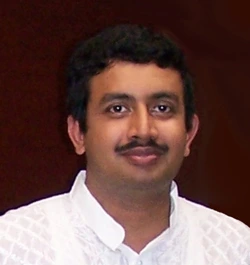
Anirban Bandyopadhyay is Principal Research Scientist at the National Institute for Materials Science (NIMS), Tsukuba, Japan. He earned his Ph.D. in Supramolecular Electronics at the Indian Association for the Cultivation of Science (IACS), Kolkata, 2005. From 2005 to 2008 he was ICYS research fellow at the ICYS, NIMS, Japan, and worked on the brain-like bio-processor building. In 2008, Anirban joined as a permanent scientist at NIMS, working on the cavity resonator model of human brain and design-synthesis of brain-like organic jelly. From 2013 to 2014 he was a visiting scientist at the Massachusetts Institute of Technology (MIT), USA. Awards include: Hitachi Science and Technology award 2010, Inamori Foundation award 2011–2012, Kurata Foundation Award, Inamori Foundation Fellow (2011–), and Sewa Society international member, Japan. www.anirbanlab.org
For a century it was believed that everything inside the membrane remains silent when a nerve spike propagates. Using nanotechnology, a coaxial probe we measured that filaments contribute to neuron firing, not by initiating the firing but fine-tuning the spike timing, regulating the ion channel release. In the microscope the optical circuit that we see is not the true picture of the neural network, if we use dielectric resonance camera, we would see a very different picture of the brain circuit. Neural circuit is not a linear circuit as modelled for a century, on the contrary, its a fractal like network where a scale free symmetry in vibrations of proteins extend to the entire brain body neural network.
1. Singh, P.; Sahoo, P.; Saxena, K.; Manna, J.S.; Ray, K.; Ghosh, S.; Bandyopadhyay, A. Cytoskeletal Filaments Deep Inside a Neuron Are Not Silent: They Regulate the Precise Timing of Nerve Spikes Using a Pair of Vortices. Symmetry 2021, 13, 821. https://doi.org/10.3390/sym13050821
2. Pushpendra Singh, Komal Saxena, Pathik Sahoo, Subrata Ghosh, and Anirban Bandyopadhyay*. Electrophysiology using coaxial atom probe array: Live imaging reveals hidden circuits of a hippocampal neural network. Journal of Neurophysiology. Volume 125Issue 6 June 2021, Pages 2107-2116 https://doi.org/10.1152/jn.00478.2020
3. Komal Saxena, Pushpendra Singh, Pathik Sahu, Satyajit Sahu, Subrata Ghosh, Kanad Ray, Daisuke Fujita and Anirban Bandyopadhyay; Fractal, scale free electromagnetic resonance of a single brain extracted microtubule nanowire, a single tubulin protein and a single neuron, Fractal and Fractional, 4, 11(2020). https://doi.org/10.3390/fractalfract4020011
Plenary 4
ALTERED STATES OF CONSCIOUSNESS

Emma Huels obtained her B.S. in Psychology from the University of Missouri-Saint Louis in 2016. Following graduation, Emma worked at Washington University School of Medicine in St. Louis examining brain activity in patients with postoperative delirium or those undergoing electroconvulsive therapy for treatment-resistant depression. Emma is a currently a doctoral candidate in the Neuroscience Graduate Program at the University of Michigan, where is she is studying the role of prefrontal and parietal cortices in consciousness using psychedelic and anesthetic drugs in an animal model. She is also interested in non-pharmacological altered states of consciousness, with a focus on shamanic practice.
Neural Correlates of the Shamanic State of Consciousness
Emma Huels, U Michigan; Co-Authors: Hyoungkyu Kim; UnCheol Lee; Tarik Bel-Bahar; Angelo V. Colmenero; Amanda Nelson; Stefanie Blain-Moraes; George A. Mashour; Richard E. Harris
Psychedelics have been recognized as model interventions for studying altered states of consciousness. However, few empirical studies of the shamanic state of consciousness, which is anecdotally similar to the psychedelic state, exist. We investigated the neural correlates of shamanic trance using highdensity electroencephalography (EEG) in 24 shamanic practitioners and 24 healthy controls during rest, shamanic drumming, and classical music listening, followed by an assessment of altered states of consciousness. EEG data were used to assess changes in absolute power, connectivity, signal diversity, and criticality, which were correlated with assessment measures. We also compared assessment scores to those of individuals in a previous study under the influence of psychedelics. Shamanic practitioners were significantly different from controls in several domains of altered states of consciousness, with scores comparable to or exceeding that of healthy volunteers under the influence of psychedelics. Practitioners also displayed increased gamma power during drumming that positively correlated with elementary visual alterations. Furthermore, shamanic practitioners had decreased low alpha and increased low beta connectivity during drumming and classical music and decreased neural signal diversity in the gamma band during drumming that inversely correlated with insightfulness. Finally, criticality in practitioners was increased during drumming in the low and high beta and gamma bands, with increases in the low beta band correlating with complex imagery and elementary visual alterations. These findings suggest that psychedelic drug-induced and non-pharmacologic alterations in consciousness have overlapping phenomenal traits but are distinct states of consciousness, as reflected by the unique brain-related changes during shamanic trance compared to previous literature investigating the psychedelic state.
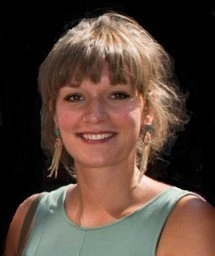
Charlotte heads the projects on the phenomenon of near-death experiences (NDEs) at the Coma Science Group (GIGA-Consciousness, University of Liège, BE). More generally, Charlotte’s work aims to investigate various states of disconnected consciousness (being conscious without experiencing the external world). She studies conditions in which people are outwardly unresponsive such as during general anesthesia or cardiac arrest, but ‘disconnected’ and/or ‘connected’ to the world, as testified by the detailed subjective reports upon awakening. She also explores the neural correlates of other altered or modified states of consciousness, such as disorders of consciousness and hypnosis (mainly using behavioral assessments, MRI and EEG techniques). She joined the Centre for Psychedelic Research (Division of Brain Sciences, Imperial College London, UK) in 2019 to investigate the overlap between the phenomenology of the classical psychedelic experiences and NDEs. Charlotte is also affiliated to the Psychology and Neuroscience of Cognition Research Unit (PsyNCog) from the University of Liège (BE). Next to her neuroscientific interest, she is also involved in the clinical management of patients suffering from disorders of consciousness (e.g., vegetative/unresponsive state, minimally conscious state).
Almost fifty years ago, the first evidence of near-death experience (NDE) during comatose state was provided, setting the stage for a new paradigm for studying disconnected consciousness and its underlying neurophysiological mechanisms. Although, historically, no thematic of research has been discussed more emotionally than the phenomenon of NDE, this is now changing and research on the phenomenon is currently increasing throughout the world. The talk provides an overview of the current state of the art in NDE research and where new opportunities for understanding the phenomenon may arise in the future.

Elizabeth W. Krasnoff, PhD, was born and raised in New York, living now on the west coast in San Francisco and in NY city. Her doctorate is in Transformative Studies, with a focus in Consciousness Studies at the California Institute of Integral Studies (CIIS). Her dissertation reviews the transformative effects of sound, specifically "The Effects of Auditory Binaural Beats on Consciousness and the Human Nervous System." In 2015, she became a certified Energy Healer through the Academy of Intuition Medicine® Master Certification program (MIM), and received her Sound Healing and Therapy Certificate from the Globe Institute. Elizabeth is also a certified Heartmath® Practitioner. Her MA is in Depth Psychology and Mythology from Pacifica Graduate Institute. Her BA in English with a Russian concentration was received from Boston College, Phi Beta Kappa, Summa cum laude. From 1994-1998 she lived abroad in Russia refining her comprehension of the Russian language.
Altered States of Consciousness and Sound: The Auditory Pathways of Binaural Beats
Elizabeth Krasnoff, California Institute for Human Science
In a time when the pursuit of altered states of consciousness is both leading edge science and a mainstream pursuit, the spotlight is on all available methods of consciousness alteration. Elizabeth investigates the power of sound to alter our states of consciousness, specifically the auditory pathways of binaural beats. Current theory in the Sound Healing field hypothesizes that binaural beats filter through our Reticular Activating System, presenting consciousness altering data to the auditory brain. Binaural beats are a difference tone created by two slightly different pitches. Electrical brain wave patterns respond to these precise frequencies and appear to impact correlative states of consciousness. The Reticular Activating System is a neural network located in the brainstem responsible for modulating our three basic states of consciousness, awake, light sleep and deep sleep. Clinical studies continue to show positive outcomes in the leading edge field of binaural beats research, and the evidence is mounting for a powerful musical healing technology—music embedded with binaural beats. Moving forward, in her first double blind and controlled pilot study, Elizabeth has compared the effects of relaxation music to the effects of relaxation music plus inaudible binaural beats, measuring EEG, HRV, GSR, bioenergy and subjective questionnaire response. All 4 subjects experienced an improvement in brain function and had a calmer brain after adding BB to brown noise or to music plus brown noise. Most also show an improvement in microcirculation or cardiovascular score after listening to music plus brown noise and BB, probably due to relaxation. All of them also showed an increase in bioenergy after adding BB. BB seems to have profound effects on the physiology of subjects and since it is not audible, these effects cannot be attributed to the placebo effect. These results are encouraging in terms of developing musical products incorporating binaural beats to affect our neural rhythms and corollary states of consciousness, and warrant further research with more subjects and different frequencies of BB and different music tracks. —Consciousness is an arousal and awareness of environment and self, which is achieved through action of the RAS on the brain stem and cerebral cortex (Daube, 1986; Paus, 2000; Zeman, 2001; Gosseries et al., 2011).In a time when the pursuit of altered states of consciousness is both leading edge science and a mainstream pursuit, the spotlight is on all available methods of consciousness alteration. Elizabeth investigates the power of sound to alter our states of consciousness, specifically the auditory pathways of binaural beats. Current theory in the Sound Healing field hypothesizes that binaural beats filter through our Reticular Activating System, presenting consciousness altering data to the auditory brain. Binaural beats are a difference tone created by two slightly different pitches. Electrical brain wave patterns respond to these precise frequencies and appear to impact correlative states of consciousness. The Reticular Activating System is a neural network located in the brainstem responsible for modulating our three basic states of consciousness, awake, light sleep and deep sleep. Clinical studies continue to show positive outcomes in the leading edge field of binaural beats research, and the evidence is mounting for a powerful musical healing technology—music embedded with binaural beats. Moving forward, in her first double blind and controlled pilot study, Elizabeth has compared the effects of relaxation music to the effects of relaxation music plus inaudible binaural beats, measuring EEG, HRV, GSR, bioenergy and subjective questionnaire response. All 4 subjects experienced an improvement in brain function and had a calmer brain after adding BB to brown noise or to music plus brown noise. Most also show an improvement in microcirculation or cardiovascular score after listening to music plus brown noise and BB, probably due to relaxation. All of them also showed an increase in bioenergy after adding BB. BB seems to have profound effects on the physiology of subjects and since it is not audible, these effects cannot be attributed to the placebo effect. These results are encouraging in terms of developing musical products incorporating binaural beats to affect our neural rhythms and corollary states of consciousness, and warrant further research with more subjects and different frequencies of BB and different music tracks. — Consciousness is an arousal and awareness of environment and self, which is achieved through action of the RAS on the brain stem and cerebral cortex (Daube, 1986; Paus, 2000; Zeman, 2001; Gosseries et al., 2011).
Keynote 2 - Plenary 5
PSYCHEDELICS
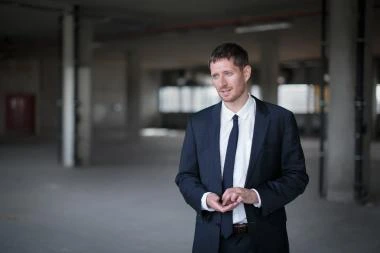
ROBIN CARHART-HARRIS
Robin Carhart-Harris moved to Imperial College London in 2008 after obtaining a PhD in Psychopharmacology from the University of Bristol, focused on the serotonin system, and an MA in Psychoanalysis from Brunel University, 2005. Robin has designed human brain imaging studies with LSD, psilocybin, MDMA and DMT, a clinical trial of psilocybin for treatment-resistant depression, a double-blind randomized controlled trial comparing psilocybin with the SSRI, escitalopram, for depression, published in the New England Journal of Medicine, and a multimodal imaging study in first time users of psilocybin. Robin has published over 100 scientific papers. He founded the Centre for Psychedelic Research at Imperial College London in April 2019, the first of its kind. In 2021, he was listed in TIME magazine’s ‘100 Next’, a list of 100 rising stars shaping the future. Also in 2021, he moved to University of California, San Francisco, becoming the Ralph Metzner Distinguished Professor in Neurology and Psychiatry. At UCSF, Robin will serve as Director of the new Psychedelics Division within the translational neuroscience Centre, Neuroscape.
Psychedelics: Brain Mechanisms, Robin Carhart-Harris, UCSF
The talk takes a multi-level approach to the question of how psychedelics work in the brain. Key themes include: the pharmacology of classic serotonergic psychedelics, what this tells us about the current, developmental and evolutionary function of serotonin 2A receptor signaling, the acute brain effects of psychedelics as determined by functional brain imaging, current evidence for psychedelic therapy, the 'REBUS' model of the action of psychedelics, and how this maps on to the phenomenology of the acute psychedelic experience and therapeutic outcomes. The talk will end with a focus on a recent double-blind RCT comparing psilocybin therapy with an established antidepressant drug in the treatment of depression.
Plenary 6
WEDNESDAY, April 20, 2022
2:00 pm - 4:10 pm MST
PSYCHEDELIC MECHANISMS
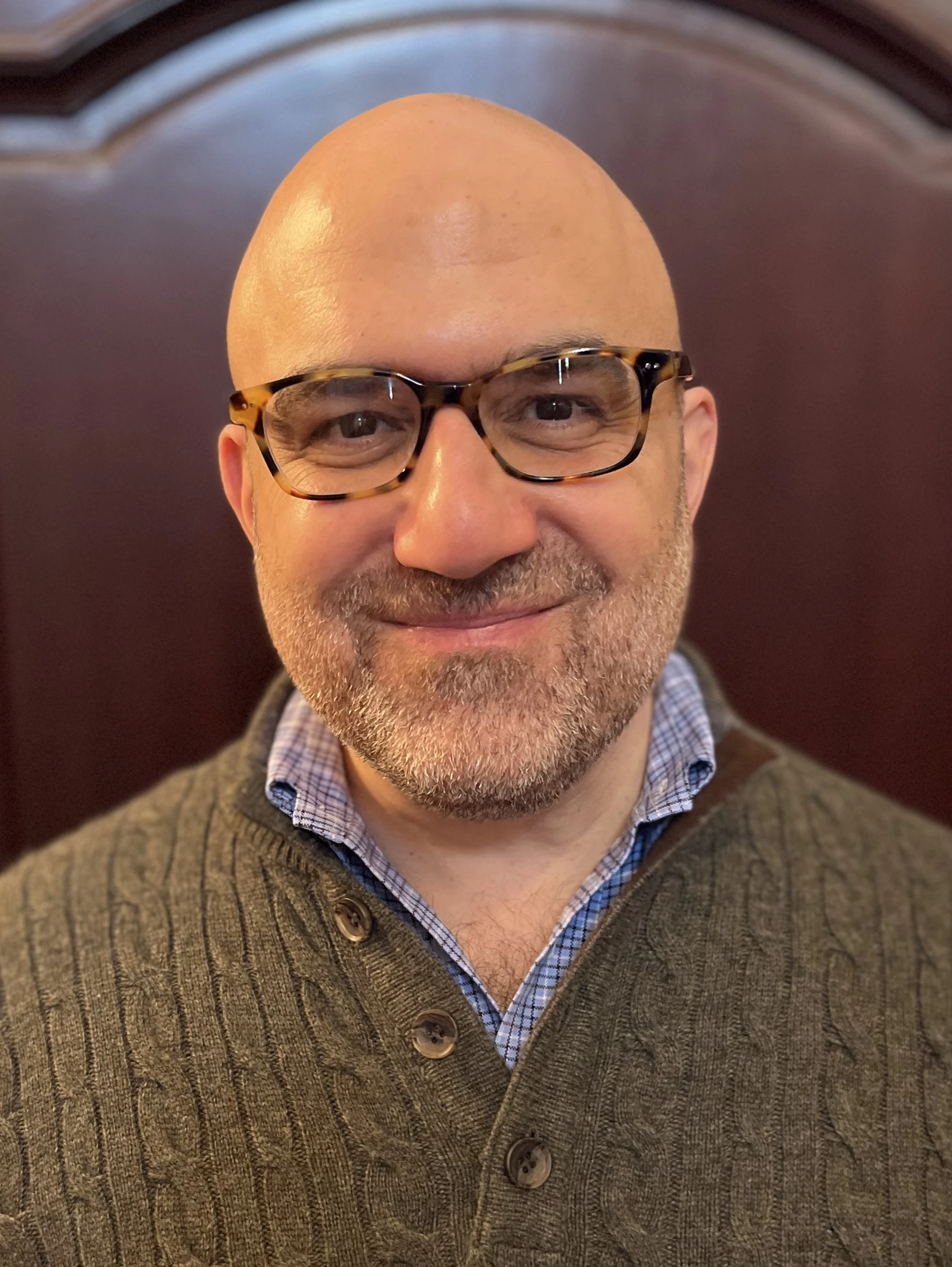
There has been a renaissance of rigorous investigation into psychedelic neuroscience and therapy, with a primary focus on canonical serotonergic drugs such as psilocybin, lysergic acid diethylamide, and dimethyltryptamine. However, it has been known since antiquity that subanesthetic doses or concentrations of general anesthetics can evoke psychedelic experiences. In this presentation, I will discuss some historical background of the use of anesthetics as psychedelics, then pivot to the neurobiology of ketamine and nitrous oxide. Drawing on studies by our research group in rodents, nonhuman primates, and humans, I will discuss the effects of subanesthetic ketamine and nitrous oxide on neuronal spike activity, cortical information transfer, and large-scale functional connectivity patterns in the brain. Lastly, I will discuss recent data that examines the phenomenon of increased neurophysiologic complexity during psychedelic drug exposure and the potential neurochemical underpinnings based on concomitant high-density electroencephalography and multi-site microdialysis in the rodent brain.

Alex Kwan is a neuroscientist whose work is focused on the neurobiology of antidepressants. He is known for using sophisticated optical imaging methods to show how drugs, such as ketamine and psilocybin, modify the structure and function of brain circuitry. His research has been published in top peer-reviewed journals including Neuron, Nature Neuroscience, and Biological Psychiatry. He has a Ph.D. in Applied Physics from Cornell University and is currently an Associate Professor in the Department of Psychiatry at Yale University. Website: http://alexkwanlab.org/ Twitter: @kwanalexc
Alex C. Kwan, Yale University
Psychedelics are compounds that produce an atypical state of consciousness characterized by altered perception, cognition, and mood. In addition to the subjective effects, it has long been recognized that these compounds have therapeutic potential for mood disorders. Among psychedelics, psilocybin has yielded highly promising results showing a relief of depression symptoms with rapid onset and long duration of weeks if not months. The long-lasting beneficial effects of psilocybin depend presumably on neural plasticity; however, the neural basis remains unclear. In this talk, I will describe a dendrite-based framework for understanding how psychedelics may promote neural plasticity. I will discuss recent experiments with psilocybin in mice to test key aspects of the cellular and circuit mechanisms.

Katrin Preller received her M.Sc. (Neuropsychology and Clinical Psychology) from University of Konstanz, Germany. She joined the University of Zurich where she investigated the neurobiological long-term effects of cocaine, MDMA, and heroin use. After completing her PhD, she investigated the effects of psychedelics at the Neuropsychopharmacology and Brain Imaging Lab. She received a SNSF PostDoc mobility fellowship and worked at the Wellcome Trust Centre for Neuroimaging, UCL, London, and Yale University, New Haven. Subsequently, she was appointed as Group Leader at the University of Zurich, and holds a position as Visiting Assistant Professor at Yale University. She is investigating the mechanistic effects of psychedelics and their therapeutic potential in various clinical populations.
The neurobiology of altered states of consciousness
Katrin Preller, University of Zurich; Yale University
Due to their unique effects on consciousness, psychedelics offer the opportunity to investigate the neuropharmacological mechanisms underlying alterations in perception and cognition important for increasing our understanding of psychiatric disorders. Furthermore, renewed interest in the potentially beneficial clinical effects of psychedelics warrants a better understanding of their underlying neuropharmacological mechanisms. However, major knowledge gaps remain regarding the neurobiology of psychedelics in humans.
In our studies we show that LSD and psilocybin modulate brain connectivity and subjective effects via agonistic activity on the serotonin 2A receptor in humans. Furthermore, we elucidate the neuropharmacology of self-relevance and meaning processing, as well as the intertwined relationship between self-processing and social cognition via the administration of LSD and psilocybin. We additionally show that the neural correlates of psychedelic-induced states differ from non-pharmacologically induced altered states of consciousness.
Our results thus attenuate major knowledge-gaps regarding the neurobiology and neuropharmacology of psychedelics. Furthermore, they increase our mechanistic understanding of cognitive and emotional processes and therefore offer important directions regarding the development of novel therapeutics.
Plenary 7
TIME & CONSCIOUSNESS
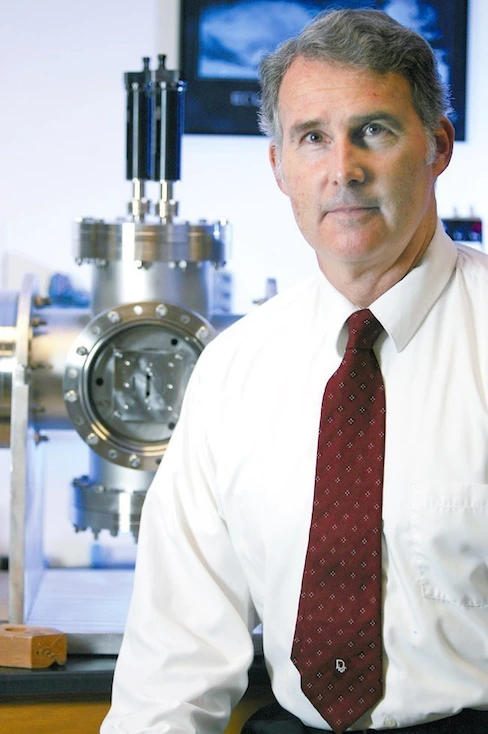
Daniel P. Sheehan is Professor of Physics at the University of San Diego. His areas of interest include plasma physics, the foundations of thermodynamics, energy technology, nanotechnology, consciousness, and the physics of time and retrocausation.
Time's Broken Arrow: Consciousness and Temporal Bidirectionality
D.P. Sheehan, Department of Physics, University of San Diego
During the last 20 years it has become increasingly clear that our physical understanding of time is incomplete. Although the fundamental equations of physics are time-symmetric -- that is, they equally admit time-forward (retarded) and time-reversed (advanced) solutions [1] -- natural processes and our personal experiences generally demonstrate a forwardly-directed, temporally asymmetric `arrow of time.' (The second law of thermodynamics is thought to underwrite most temporal asymmetries.) Human and animal precognition are at odds with this standard temporal arrow [2]; recent quantum laboratory experiments further press the issue. This presentation considers the case for temporal bidirectionality in the natural world and in human consciousness, focusing on precognition and retrocausation. Also considered is the possibility that precognitive effects might be demonstrated by non-sentient devices, i.e., informational time machines. It is argued that retrocausation and precognition are not at odds with standard physics, but are in fact natural outcomes of it. Indeed, time may be losing its direction -- but not its mind. In fact, it may finally be coming to its senses.
1) H.D. Zeh, The Physical Basis of the Direction of Time, Springer, Berlin (2001).
2) D.P. Sheehan (Editor), AIP Conf. Vols. 863, 1408 ,1841; AIP Press (2006, 2011, 2017).
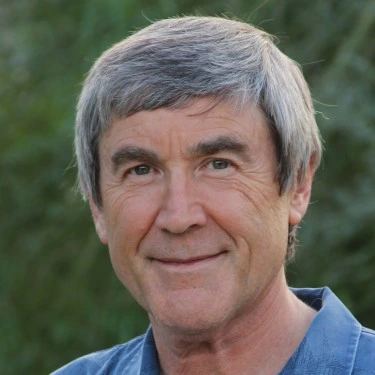
Paul Davies is a theoretical physicist, cosmologist, astrobiologist and best-selling science author. He has published about 30 books and hundreds of research papers and review articles across a range of scientific fields. He is also well-known as a media personality and science popularizer in several countries. His research interests have focused mainly on quantum gravity, early universe cosmology, the theory of quantum black holes and the nature of time. He has also made important contributions to the field of astrobiology, and was an early advocate of the theory that life on Earth may have originated on Mars. For several years he has also been running a major cancer research project, and developed a new theory of cancer based on tracing its deep evolutionary origins. Among his many awards are the 1995 Templeton Prize, the Faraday Prize from The Royal Society, the Kelvin Medal and Prize from the Institute of Physics, the Robinson Cosmology Prize and the Bicentenary Medal of Chile. He was made a member of the Order of Australia in the 2007 Queen's birthday honours list and the asteroid 6870 Pauldavies is named after him. His more recent books include "What's Eating the Universe?", "The Demon in the Machine", "About Time", "The Origin of Life", "The Goldilocks Enigma: Why Is the Universe Just Right for Life?", "How to Build a Time Machine" and "The Eerie Silence: Are We Alone in the Universe?"
The universal perception that time passes, or flows, is an illusion. Time cannot change; the world can. I shall demonstrate that the concept of a flow of time is meaningless, and instead trace the origin of this impression to the false tacit assumption that 'the self,' i.e. personal identity, is conserved in time. This error arises because of the large degree of mutual information between the self at earlier and later times. The fact that time (clearly) does not flow in no way undermines the existence of an arrow of time in the physical world, understood as an asymmetry in the evolution of physical states in time. An asymmetry of the world in time is not an asymmetry of time.The universal perception that time passes, or flows, is an illusion. Time cannot change; the world can. I shall demonstrate that the concept of a flow of time is meaningless, and instead trace the origin of this impression to the false tacit assumption that 'the self,' i.e. personal identity, is conserved in time. This error arises because of the large degree of mutual information between the self at earlier and later times. The fact that time (clearly) does not flow in no way undermines the existence of an arrow of time in the physical world, understood as an asymmetry in the evolution of physical states in time. An asymmetry of the world in time is not an asymmetry of time.
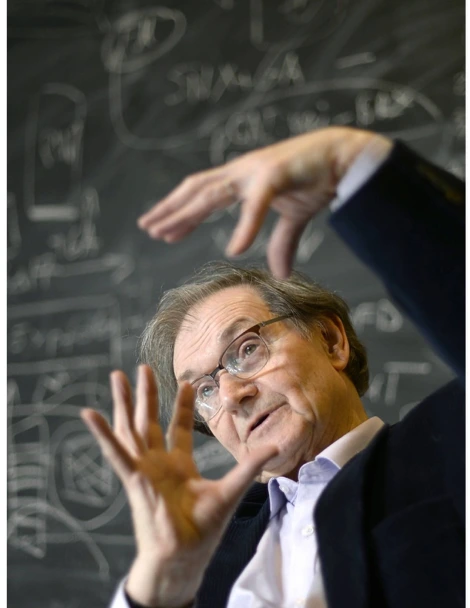
Roger Penrose was born, August 8, 1931 in Colchester Essex UK. He earned a 1st class mathematics degree at University College London; a PhD at Cambridge UK, and became assistant lecturer, Bedford College London, Research Fellow St John’s College, Cambridge (now Honorary Fellow), a post-doc at King’s College London, NATO Fellow at Princeton, Syracuse, and Cornell Universities, USA. He also served a 1-year appointment at University of Texas, became a Reader then full Professor at Birkbeck College, London, and Rouse Ball Professor of Mathematics, Oxford University (during which he served several 1/2-year periods as Mathematics Professor at Rice University, Houston, Texas). He is now Emeritus Rouse Ball Professor, Fellow, Wadham College, Oxford (now Emeritus Fellow). He has received many awards and honorary degrees, including knighthood, Fellow of the Royal Society and of the US National Academy of Sciences, the De Morgan Medal of London Mathematical Society, the Copley Medal of the Royal Society, the Wolf Prize in mathematics (shared with Stephen Hawking), the Pomeranchuk Prize (Moscow), and one half of the 2020 Nobel Prize in Physics, the other half shared by Reinhard Genzel and Andrea Ghez. He has designed many non-periodic tiling patterns including a large paving at entrance of Andrew Wiles Mathematics Building, Oxford, and the Transbay Center, San Francisco, California. Sir Roger is widely acclaimed for fundamental advances in understanding the universe. His 2020 Nobel Prize in Physics was bestowed for showing that black holes are robust predictions of Einstein’s theory of general relativity. Roger has also proposed a solution to the measurement problem in quantum mechanics (‘objective reduction’, ‘OR’), which he suggests is also the origin of consciousness, leading to a theory of brain function (‘orchestrated objective reduction’, ‘Orch OR’). And Roger’s concept of Conformal Cyclic Cosmology (‘CCC’) posits a serial, eternal universe, with the Big Bang preceded by a previous aeon which had its own Big Bang, that aeon preceded by another and so on.
Keynote 3 (Plenary 8)
THURSDAY, April 21, 2022
11:10 am - 12:30 pm MST
ASTROBIOLOGY & ASTROCONSCIOUSNESS
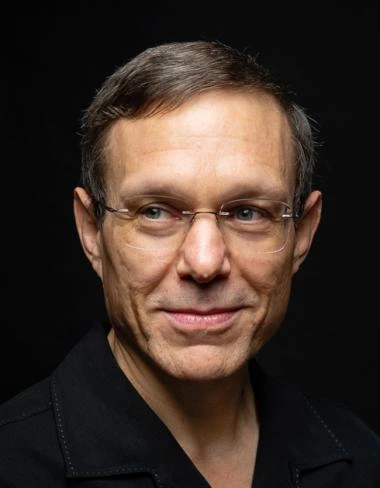
ABRAHAM (AVI) LOEB is the Frank B. Baird, Jr., Professor of Science at Harvard University and a bestselling author (in lists of the New York Times, Wall Street Journal, Publishers Weekly, Die Zeit, Der Spiegel, L'Express and more).
Avi Loeb received a PhD in Physics from the Hebrew University of Jerusalem in Israel at age 24 (1980-1986), led the first international project supported by the Strategic Defense Initiative (1983-1988), and was subsequently a long-term member of the Institute for Advanced Study (1988-1993). Loeb has written 8 books, including most recently, Extraterrestrial (Houghton Mifflin Harcourt, 2021), and about 800 papers (with an h-index of 117) on a wide range of topics, including black holes, the first stars, the search for extraterrestrial life and the future of the Universe. Loeb is the head of the Galileo Project in search for extraterrestrial intelligence, the Director of the Institute for Theory and Computation (2007-present) within the Harvard-Smithsonian Center for Astrophysics , and also serves as the Head of the Galileo Project (2021-present). He had been the longest serving Chair of Harvard's Department of Astronomy (2011-2020) and the Founding Director of Harvard's Black Hole Initiative (2016-2021). He is an elected fellow of the American Academy of Arts & Sciences the American Physical Society, and the .International Academy of Astronautics. Loeb is a a former member of the President's Council of Advisors on Science and Technology (PCAST) at the White House, a former chair of the Board on Physics and Astronomy of the National Academies (2018-2021) and a current member of the Advisory Board for "Einstein: Visualize the Impossible" of the Hebrew University. He also chairs the Advisory Committee for the Breakthrough Starshot Initiative (2016-present) and serves as the Science Theory Director for all Initiatives of the Breakthrough Prize Foundation. In 2012, TIME magazine selected Loeb as one of the 25 most influential people in space and in 2020 Loeb was selected among the 14 most inspiring Israelis of the last decade. Click here for Loeb's commentaries on innovation and diversity. https://www.cfa.harvard.edu/~loeb/
The search for extraterrestrial life is one of the most exciting frontiers in science. First tentative clues were identified close to Earth in the form of the unusual interstellar object `Oumuamua and Unidentified Aerial Phenomena (UAP) in the Earth's atmosphere. The recently announced "Galileo Project" ushers the new frontier of "space archaeology" in search of extraterrestrial technological relics. The lecture will feature content from my book "Extraterrestrial", as well as the textbook "Life in the Cosmos", both published in 2021. Related material was also featured in my weekly commentaries in Scientific American and Medium.
Plenary 9
THURSDAY, April 21, 2022
2:00 pm - 4:10 pm MST
ORIGINS OF LIFE
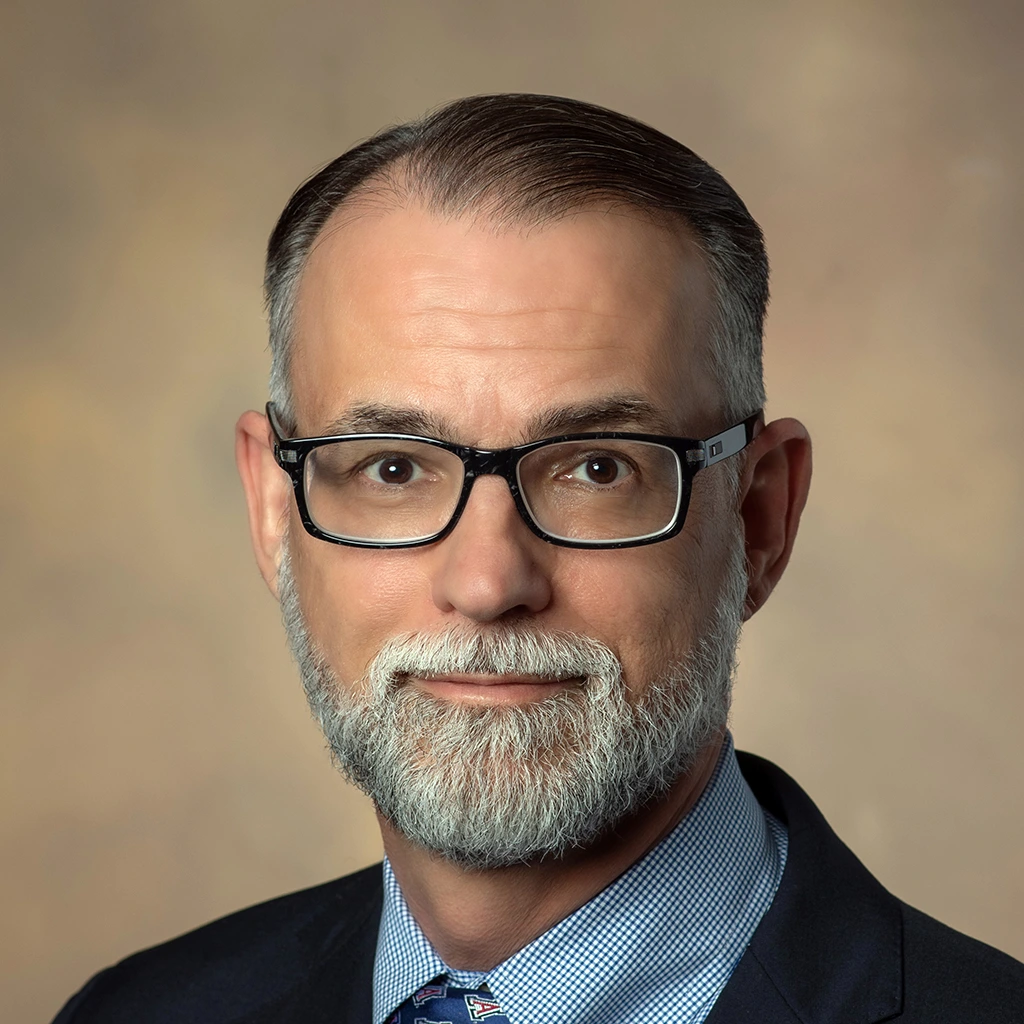
Dante Lauretta is principal investigator of the OSIRIS-REx mission and a regents professor of planetary science at the University of Arizona’s Lunar and Planetary Laboratory. His research interests focus on the chemistry and mineralogy of asteroids and comets, and he is an expert in the analysis of extraterrestrial materials, including asteroid samples, mete-orites and comet particles.
Dr. Lauretta fosters the advancement of the next generation of scientists, engineers, and other space leaders through mentorship and taught coursework which apply his expertise in planetary science and spacecraft mission design & implementation. Dr. Lauretta heads the OSIRIS-REx research team at UArizona working on this mission, which has included more than 100 undergraduate and graduate students. This project will help ensure that the University of Arizona remains at the forefront of planetary exploration for the next decade.
NASA’s OSIRIS-REx Mission
The OSIRIS-REx mission was selected in 2011. The spacecraft launched in September 2016 and began its journey to Bennu, a carbon-rich, near-Earth asteroid. The spacecraft rendezvoused with Bennu in 2018 and successfully obtained a sample in October 2020. The spacecraft embarked on its return voyage to Earth on May 10, 2021. On Sept. 24, 2023, the spacecraft will jettison the sample capsule and send it onto a trajectory to touch down in the Utah desert. Sample analysis will continue until 2025. These samples will be the first for a U.S. mission and may hold clues to the origin of the solar system and the organic molecules that may have seeded life on Earth. The University of Arizona leads the mission for NASA and will provide sample analysis laboratories for the returned samples. NASA’s Goddard Space Flight Center provides overall mission management. Lockheed Martin Space Systems built the spacecraft. United Launch Alliance built the mission’s Atlas V launch vehicle. The mission is in an exciting phase right now as the OSIRIS-REx spacecraft continues its return journey to Earth. w w w . A s t e r o i d M i s s i o n . o r g
On Oct. 20, 2020, NASA’s OSIRIS-REx spacecraft descended to the surface of asteroid Bennu, contacted briefly, and collected a sample of carbonaceous material (Lauretta et al. 2021). These samples will return to Earth in 2023. Analyses of these samples promise advancement in our knowledge of the initial stages of planet formation and the origin of life (OOL). In particular, the samples will be analyzed to determine whether the building blocks required for the different OOL theories could have been delivered to Earth by carbonaceous asteroids. A leading theory in origin of life research is the RNA World Hypothesis, in which RNA is the first biomolecule and performs both reproductive and catalytic functions (Woese 1967; Eigen and Schuster 1977; Gilbert 1986). The sample analysis team (SAT) will analyze solvent extracts of Bennu samples for the presence of purines and pyrimidines (Callahan et al. 2011), and polyols including ribose and other bioessential sugars (Furukawa et al. 2019). Alternatively, the Protein World Hypothesis purports that proteins are amplified in the absence of any genetic function (Ikehara 2005). The SAT will analyze for both contemporary protein and non-protein amino acids and peptides to test this hypothesis. In addition, the team will determine if organic material contains enantiomeric excesses for chiral molecules that are of the same handedness as found in life (i.e., L-amino acids). A third approach is the Metabolism First Hypothesis, where self-reproducing and evolving proto-metabolic networks predate self-replicating molecules (Vasas et al. 2010). The SAT explores this concept by seeking signs of frozen chemical reaction networks, catalytic cycles, autocatalytic cycles, or pathways. (Aponte et al. 2017; Fernández-Garcia et al. 2017). The above hypotheses are driven by the principle that life is defined by a complex set of physicochemical processes and assume that consciousness evolved after life’s origin. The Orchestrated Objective Reduction hypothesis proposes that consciousness preceded life. Consciousness, in this theory, is driven by self-collapse of the quantum wavefunction, producing “proto-conscious” moments (Hameroff 2017) that could have driven organic molecules to self-organize. The first molecules to enter the quantum coherent state may have been polyaromatic hydrocarbons. These hydrocarbon rings occur at the core of proteins, nucleic acids, and psychoactive compounds. While not part of the SAT plan, we are investigating quantum effects in the chemically complex, macromolecular organic material that likely contains the bulk of Bennu’s carbon (Cody and Alexander 2005).
References:
Aponte et al. (2017) ACS Earth Space Chem. 1.1: 3-13.
Callahan et al. (2011) PNAS 108.34: 13995-13998.
Cody and Alexander (2005) GCA 69.4: 1085-1097.
Eigen and Schuster (1977) Naturwissenschaften, 64(11), 541-565.
Fernández-Garcia et al. (2017) Chem. Commun., 53: 4919-4921.
Furukawa et al. (2019) PNAS 116.49: 24440-24445.
Gilbert (1986) Nature 319.6055: 618-618.
Hameroff (2017) In: On Human Nature (pp. 333-353). Academic Press.
Ikehara (2005) Chem Rec 5.2: 107-118.
Lauretta et al. (2021) In: Sample Return Missions. Elsevier, 163-194.
Pross (2004). OLEB 34.3: 307-321.
Vasas et al. (2010) PNAS 107.4: 1470-1475.
Woese (1967) New York: Harper & Row, 200 pp.
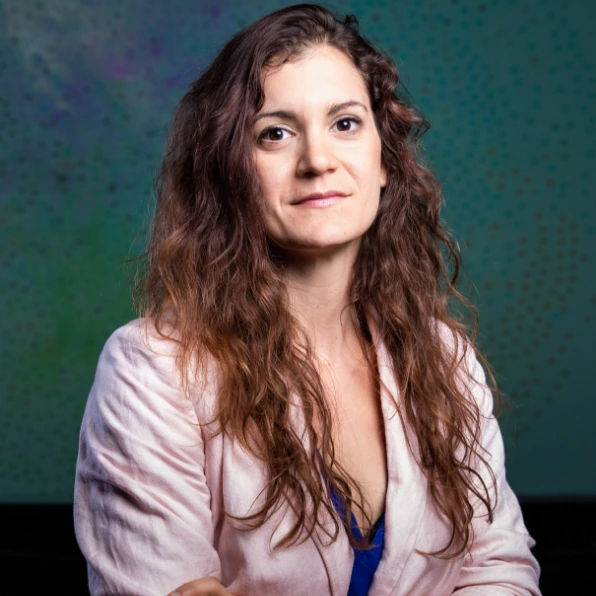
Professor Sara Walker is an astrobiologist and theoretical physicist interested in the origin of life and how to find life on other worlds. While there are many things to be solved, she is most interested in whether or not there are ‘laws of life’ - related to how information structures the physical world - that could universally describe life here on Earth and on other planets. At Arizona State University she is Deputy Director of the Beyond Center for Fundamental Concepts in Science, Associate Director of the ASU-Santa Fe Institute Center for Biosocial Complex Systems and Assistant Professor in the School of Earth and Space Exploration. She is also Co-founder of the astrobiology-themed social website SAGANet.org, and is a member of the Board of Directors of Blue Marble Space. She is active in public engagement in science, with appearances at the World Science Festival and on "Through the Wormhole" and NPR's Science Friday.
Hard Problems: Life and Consciousness
Understanding what life is, and by extension how it originates may be the most difficult open question in science, rivaling only the problem of consciousness in its potential difficulty. Both seem to bend our current understanding of physics and chemistry as ill-equipped to solve them. This led the to the notion of the ‘hard problem’ of consciousness, meant to precisely articulate the key feature of consciousness our current understanding of reality can’t explain - the problem of experience, that is why does it feel like anything to exist? Like consciousness, here I argue that explaining life can similar be reduced to a single focal hard problem, the hard problem of life, that is how can information affect the material world? I discuss new developments in a theory called assembly theory aiming to address this problem.
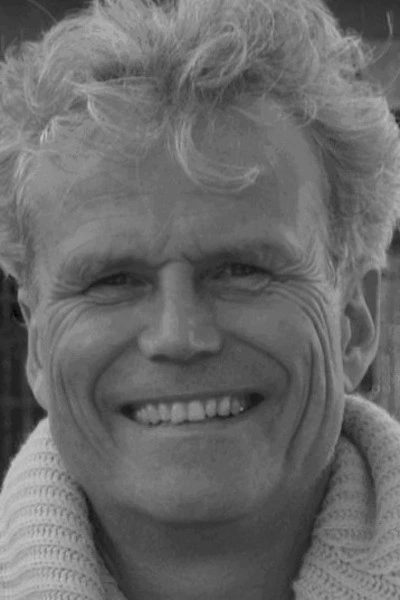
Steen Rasmussen, University of Southern Denmark | Santa Fe Institute
Steen Rasmussen is currently a professor in physics and a center director at University of Southern Denmark and an external research professor at the Santa Fe Institute, USA. His studies the creative forces in nature and engineers minimal living and intelligent processes in computers, robots, and the lab. He has consulted on science and technology issues for the European Commission, the Danish Parliament, the US Congress, as well as private organizations. He has received many rewards, starting with P. Gorm-Petersens Mindelegat in the presence of Her Majesty the Queen, Margrethe II of Denmark, and most recently a Lifetime Achievement Award from the International Society for Artificial Life. With his Co-PIs he has won $39M in research grants to his home institutions and international research consortia across the US, EU and Denmark. For 20 years he worked at Los Alamos National Laboratory, USA. He returned to his current position in Denmark late 2007.
We use a systemic protocell design process as a starting point for exploring two fundamental questions: How may minimal living systems emerge from non-living materials? And how may minimal living systems support increasingly more evolutionary richness?
Living matter, as a minimum[1], is composed of (i) a metabolism that transforms energy to support the involved reactions e.g., to generate building, (ii) an informational system with inheritable information that at least in part controls the metabolism and (iii) a container that co-localizes the metabolism and the informational system. Further, the system exists in (iv) an environment that provides resources and free energy as well as absorbs waste. We present an experimental example of a protocellular system that satisfies the above.
Landauer’s principle[2][3][4][5] states that an ability to copy and evolve information costs free energy. Therefore, available free energy must be a prerequisite for replication to occur, and thus the existence of a metabolism is a prerequisite as a converter of available free energy into the work needed in replication. Good molecular candidates to support simple metabolic processes are complexes of polyaromatic hydrocarbons and metal.
Information in modern life usually reefers to sequential information (e.g., in DNA and RNA or proteins), while compositional information[6] (e.g., the composition of an aggregate) is a less restrictive form of information that can also be replicated. We show how compositional information can be coupled to a metabolism experimentally as well as in simulation in the context of a minimal living protocell[7][8][9].
By examining data from systems in physics, biology, engineering, and economics it turns out that one can observe two different modes of evolution[10]: optimization and expansion. The former may occur in systems whose size and component interactions do not change substantially over time, while the latter is a key property of open-ended evolution, where components and component interactions change over time. Thus, to enhance the evolutionary richness in a system that only optimizes, e.g., the above presented protocellular system, the system must be enriched with new components, and thereby interactions, to expand its potential dynamics. We have applied this simple design idea[11] with some success to enhance the behavioral richness both for computational and experimental investigations, but it is only in retrospect one can be certain, which system expansions one should apply.
[1] https://royalsocietypublishing.org/doi/10.1098/rstb.2015.0440
[2] https://en.wikipedia.org/wiki/Landauer%27s_principle
[3] https://www.nature.com/articles/ncomms8669
[4] https://arxiv.org/abs/1004.4732
[5] https://royalsocietypublishing.org/doi/10.1098/rsta.2016.0343
[6] https://www.pnas.org/content/pnas/97/8/4112.full.pdf
[7] https://royalsocietypublishing.org/doi/10.1098/rstb.2015.0440
[8] https://direct.mit.edu/isal/proceedings/isal2020/269/98487
[9] https://direct.mit.edu/isal/proceedings/isal/33/69/102946
[10] https://direct.mit.edu/artl/article-abstract/25/1/9/2914/
[11] https://direct.mit.edu/artl/article-abstract/7/4/329/2381/
Plenary 10
FRIDAY, April 22, 2022
8:30 am - 10:40 am MST
THEORIES OF CONSCIOUSNESS
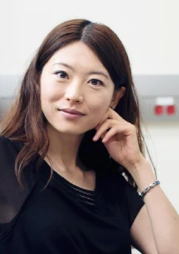
Despite intense interests and research over the past three decades, the neural mechanisms of conscious visual perception remain a mystery. In this talk, I will give an overview of our recent work tackling this fundamental question. Using a combination of high temporal resolution (E/MEG, electrocorticography) and high spatial resolution (e.g., 7T fMRI) techniques to record from the human brain, and employing multiple perceptual paradigms, we have found that: I) Conscious perception likely requires the coordination of large-scale brain dynamics across multiple brain networks, including both content-specific cortical activity and non-content-specific subcortical activity. II) The preexisting brain state, including both the connectivity patterns reflecting past experiences and the moment-to-moment spontaneous activity fluctuations, strongly shapes conscious perception. In addition, I will discuss the implications of these findings for theories of conscious perception.
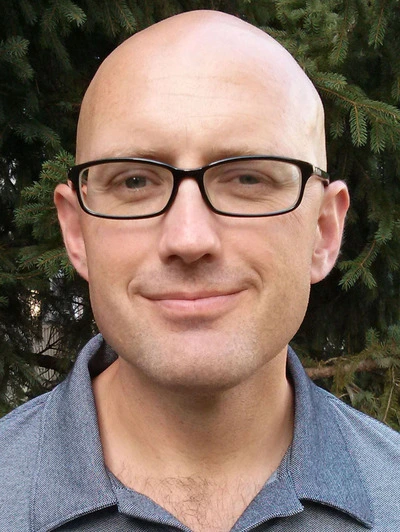
Yuri Saalmann is an Associate Professor in the Department of Psychology, UW-Madison, and Director of the Saalmann Lab, Wisconsin National Primate Research Center. He performed his doctoral work in neuroscience at the Australian National University, and postdoctoral research at the University of Melbourne, Australia, and Princeton University. His lab investigates the neural basis of cognitive control – the ability to flexibly adapt behavior according to goals and context – and consciousness. This is done using a combination of neuroimaging and intracranial electrophysiology in non-human primates and human subjects. His research program is directed at understanding information processing in large-scale brain networks in healthy subjects and subjects with psychiatric disorders, such as schizophrenia and attention deficit hyperactivity disorder, and neurological disorders, such as deficits in awareness after stroke.
Competing theories of consciousness disagree on the contribution of frontal versus posterior cortex and largely neglect subcortical influences. To test proposed neural correlates of consciousness (NCC), we simultaneously recorded neural activity from the frontal and parietal cortex, as well as subcortical areas in the basal ganglia and central thalamus, of awake, sleeping and anesthetized macaques. Further, we bidirectionally manipulated consciousness on a finer scale using thalamic deep brain stimulation, rousing macaques from continuously administered anesthesia or reducing consciousness in behaving macaques. I will discuss machine learning analyses of these neural data that show parietal cortex and subcortical areas contributed more than frontal cortex to decoding different conscious states. This work suggests that an integrated parietal-striatal-thalamic structure is important for consciousness. I will also discuss an ongoing adversarial collaboration testing the different NCC proposed by Global Neuronal Workspace Theory and Integrated Information Theory, using high-density electrophysiology and optogenetics in macaques and mice performing a similar sensory discrimination task.

Lucia Melloni is currently group leader at the Max Planck Institute for Brain Research in Frankfurt am Main, Germany, research assistant professor at New York University Langone Medical Center, and a research scientist at Columbia University College of Physicians and Surgeons in New York, NY. Her research centers on consciousness, electrophysiology, meditation, perceptual learning, and predictive coding.
Keynote 4 - Plenary 11
FRIDAY, April 22, 2022
11:10 am - 12:30 pm MST
REALITY + : From the matrix to the metaverse
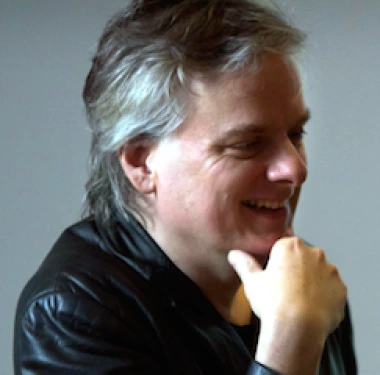
DAVID CHALMERS
David Chalmers is University Professor of Philosophy and Neural Science and co-director of the Center for Mind, Brain, and Consciousness at New York University. He is the author of _The Conscious Mind_ (1996) and of Reality+: Virtual Worlds and the Problems of Philosophy (2022). He is known for formulating the “hard problem” of consciousness, for the idea of the “extended mind,” and for the thesis that virtual reality is genuine reality.
David Chalmers was featured in the New York Times Magazine, Dec. 10, 2021 - Interview with David Marchese - 'Can We Have a Meaningful Life in a Virtual World'
-----
Reality+: Virtual Worlds and the Problems of Philosophy will be published by W.W. Norton (US) and Allen Lane (UK) on January 25, 2022. Here’s an excerpt.
Former Director, Center for Consciousness Studies, University of Arizona. Faculty positions included, UC Santa Cruz, University of Arizona, Australian National University. PhD, Philosophy and Cognitive Science, Indiana University; McDonnell Fellow at Washington University; Rhodes Scholar in Pure Maths and Computer Science at the University of Adelaide in Australia. David Chalmers is Co-Founder, Center for Consciousness Studies, Tucson. Chalmers’s writings include: Philosophy of Mind; The Conscious Mind; The Character of Consciousness; Constructing the World; Mind and Consciousness; Facing Up to the Problem of Consciousness.
DAVID CHALMERS WEBSITE - http://consc.net/
David Chalmers, Professor of Philosophy and Neural Science, New York University
Plenary 12
FRIDAY, April 22, 2022
2:00 pm - 4:10 pm MST
QUANTUM NEUROSCIENCE

Hartmut Neven is an Engineering Director at Google. He is the founder and manager of the Quantum Artificial Intelligence lab. The objective of the lab is to fabricate quantum processors and develop novel quantum algorithms to dramatically accelerate computational tasks for machine intelligence. Previously, Hartmut was head of the Visual Search team. His team developed the visual search service which today is used by a large number of Google products including Image Search, Google Photos, YouTube, Street View and Google Goggles. His teams won a number of competitions designed to establish the best visual recognition software for faces (FERET 1996, FRVT 2002), objects (ImageNet 2014) and text (ICDAR 2013). Hartmut was also a co-founder of project Glass and led the team that built the first prototype. Prior to joining Google, Hartmut started two computer vision companies, the second one was acquired by Google in 2006. Hartmut obtained his Ph.D. in 1996 with a thesis on "Dynamics for vision-guided autonomous mobile robots". Then he became a research professor for computer science and theoretical neuroscience at the University of Southern California.
Travis Craddock, Nova Southeastern University
Aarat Kalra, Princeton University
